- Home
- Chiyoda Highlights
- NHK historical drama UNBOUND Historical sites relating to TSUTAYA Juzaburo and historical figures

As a representing publisher of the Edo era, TSUTAYA Juzaburo brought a number of cultural figures and writers such as KATSUSHIKA Hokusai, KITAGAWA Utamaro, TAKIZAWA Bakin and OTA Nampo into the world and contributed to the development of the popular culture. He has been taken up as a main character of the historical drama "UNBOUND" that started broadcasting in January, 2025 (Starring YOKOHAMA Ryusei). In this article, we are going to introduce the places that deeply influenced the life of TSUTAYA Juzaburo and associated place of the figures around him.
As a Roju(Senior councilor of the Tokugawa Shognate), TANUMA Okitsugu advanced proactive economic policies and promoted the development of commerce. As if to get inspired by the social mood, TSUTAYA Juzaburo brought a number of huge hits into the world. The person who indirectly influenced TSUTAYA was TANUMA Okitsugu and his house was located around current Kanda-bashi Bridge. It is said that many merchants with gifts crowded this house every day to receive benefits. In UNBOUND, an actor WATANABE Ken plays TANUMA Okitsugu.

Kandabashi-mon Gate, constructed in 1629 by the lord of Mooka Domain, INABA Masakatsu was located in the place where Kandabashi Bridge is currently spanning. Kandabashi-mon Gate was regarded as one of the five Edo entrances and it was used as the path when Shogun visited Kaneiji Temple in Ueno and Nikko Tosho-gu.
The childhood name of MATSUDAIRA Sadanobu is known as Masamaru and in UNBOUNDED, TERADA Kokoro plays Masamaru. MATUDAIRA Sadnobu was born in 1759 (Horeki 9) to TAYASU family living westside of Tayasu-mon Gate in Kitanomaru Park, located five-minute walk from Kudanshita Station. Tayasu-mon Gate was repaired MATSUDAIRA Tadamasa, an ancestor of MATSUDAIRA Sadanobu in 1629 (Kanei 6). The name of the current Tayasu-mon Gate came from "Tayasu Daimyojin", a shrine (current Tsukudo Shrine) that used be situated on the land.
Though repaired several times, Tayasu-mon Gate still remains as the oldest existing castle gate in Edo Castle. It is designated as National Important Cultural Property as important remains that tell the history and architectual technology to the present day.
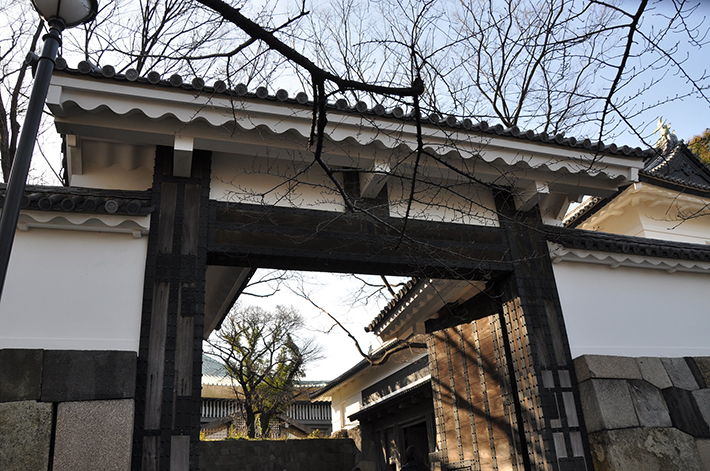
In the Kansei Reforms conducted by MATSUDAIRA Sadanobu, regulations against expressions are said to have been strict because popular literature and Ukiyo-e were corrupting the morality. Publications TSUTAYA Juzaburo published also became the target of regulations.

Tayasu-mon Bridge Read more
| Address | Between Kudan-kita 1-chome, Chiyoda-ku and Kitanomaru Garden |
During the Edo era, in order to preserve public security and orders, there were Minami-machi bugyosho and Kita-machi bugyosho that played a role like a police station and a court. After MATSUDAIRA Sadanobu became a Roju, TSUTAYA Juzaburo got punished by Kita-machi bugyosho and had half of his property forfeited. (called Shinjo hangen)

Kita-machi bugyosho remains were situated near current JR Tokyo Station Nihonbashi Exit. For information, TOYAMA Saemonnojyo Kagemoto known as "Toyama no Kin-san" is said to have worked here as a bugyo for three years.
The second head of Hitotsubashi family, one of TOKUGAWA Gosangyo, TOKUGAWA Harusada is known to have got rid of TANUMA faction. In UNBOUND, TOKUGAWA Harusada, played by IKUTA Toma, lived in a house inside Hitotsubashi-mon Bridge of Edo Castle.
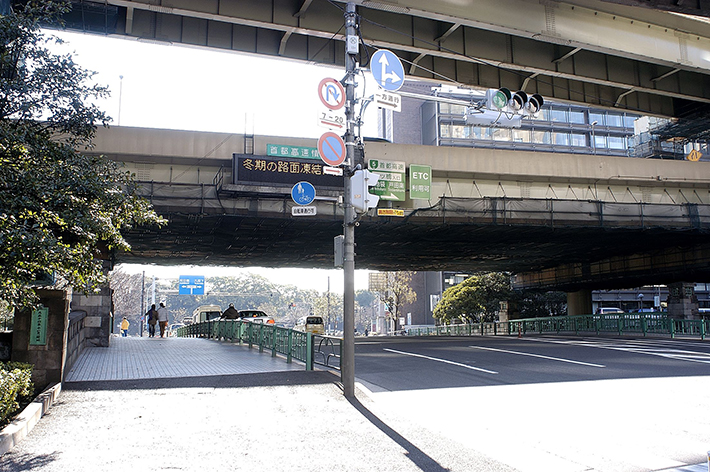
In 2017, the remains of the garden of this residence and the moat and the part of the building is said to have been made apparent. Now, there is a bridge Hitotsubashi Bridge and the stone
TAKIZAWA Bakin known as a writer of "Nanso Satomi Hakkenden", which is a long novel written in the Edo era, worked as a helper and kept on writing under the patronage of TSUTAYA Juzaburo, who then was a book store owner and printing publisher. He supported TAKIZAWA Bakin's early career.
TAKIZAWA Bakin lived in current Kudan-1chome. In 1793 (Kansei 5), at the age of 27, recommended by TSUTAYA Juzaburo, he was adopted into a family of the bride of a footwear dealer in the place called Iidabashi Nakazaka until he moved to Kanda-Dobocho when he was 58. Now, at the place where there was a well at TAKIZAWA Bakin's residence, a stone monument, "The remains of the well of TAKIZAWA Bakin's ink stone" is situated.
HIRAGA Gennai, who has various kinds of titles such as a writer, writer of popular stories, inventor and Dutch scholar, was a very famous person in Edo. In particular, he was known as a writer of a novel, "Joruri" and restoration of a machine called "erekiteru" that produced static electricity by friction and he even influenced modern culture and science technology. A guide book TSUTAYA Juzaburo was involved as an editor for the first time drew a lot of attention because HIRAGA Gennai was in charge of its preface. In UNBOUND, an actor YASUDA Ken plays HIRAGA Gennai as a very important character of the drama.
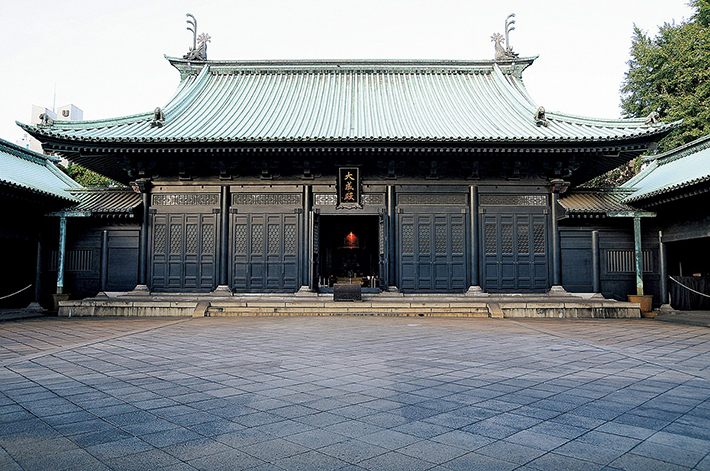
Yushima Seido, which HIRAGA Gennai entered at the age of 29, still remains near Ochanomizu Station as a historical site. Studying at this classroom, he lived in a dormitory. It is said that through the experiences he had here, he obtained a lot of knowledge and established a foundation of later successful activities
Moved to current Yushima by TOKUGAWA Tsunayoshi in 1690, it became Yushima Seido. It started with a private school but it developed into an administrative school run by the Edo Shognate. Confucius, a founder of Confucianism is enshrined at Yushima Seido.
OTA Nampo is known as a kyoka writer and an essayist representative of Edo. Especially, in kyoka, he was called the "Three masters of kyoka" with KARAGOROMO Kisshu and AKERA Kanko and was highly evaluated. TSUTAYA Juzaburo was engaged in several historic works as a publisher. "Usohappyaku Manpachiden", written by OTA Nampo was published by TSUTAYA Juzaburo as a publisher.
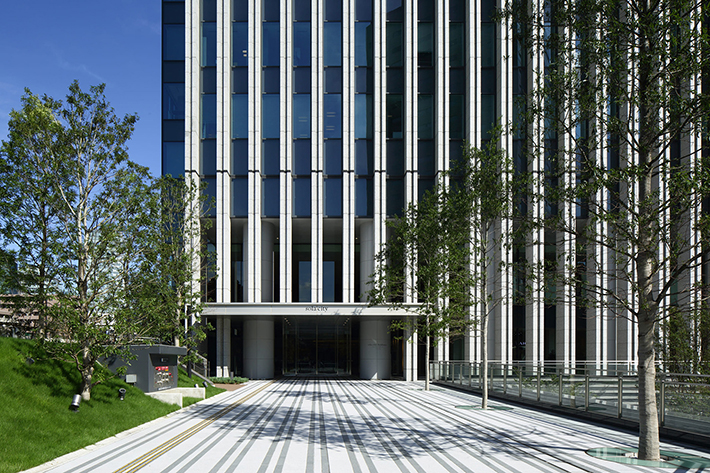
On the place where Ochanomizu sola city stands, located one-minute walk from Ochanomizu Station, there was a residence called Shirinro named by OTA Nampo, where he spent in his later years. The two-story, ten-tatami room was used as his study and guest room and is known as the cultural exchange for writers at that time.

Ochanomizu Sola City Read more
| Address | 6, Kanda-Surugadai 4-chome, Chiyoda City, Tokyo |
| TEL | 03-3255-6585 |
| Business Hour | Opening hours vary by shops and facilities. |
Kanda Shrine, located five-minute walk from Ochanomizu Station. As the place where the scholar of Japanese literature, KADA no Azumamaro started Edo's first Japanese literature class was in the SHIBASAKI residence and the SHIBASAKI family was a "Shake"(family of Shinto priests serving a shrine for generations), the precinct has a memorial stone of the birthplace of Japanese literature. OTA Nampo, who was familiar with Japanese literature also referred to Kanda Myojin in his kyoka.
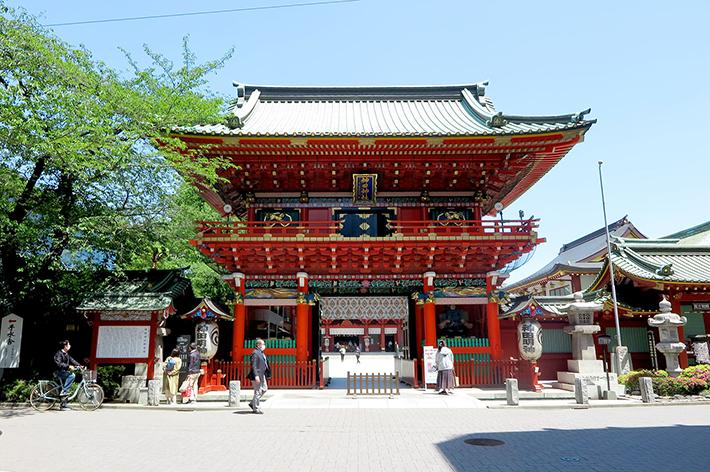
Kanda Myojin parishioners'' neighborhood associastion consists of 108 neighborhood associations cenering on Chiyoda City, Kanda, Nihonbashi, Akihabara, Otemachi, Marunouchi and so on. Inside this Kanda Myojin Parishioners' town association, there were residential houses of HIRAGA Gennai and Takizawa Bakin.

Kanda-jinja Shrine (Kanda Myojin Shrine) Read more
| Address | 2-16-2 Soto-Kanda, Chiyoda-ku, Tokyo |
| TEL | 03-3254-0753 |

Kandabashi-mon gate Ruins
Akihabara・kanda
Detail

Tayasu-mon Bridge
Jinbocho・Ochanomizu
Detail

Kita-machi Bugyosho ruins
Imperial Palace・ Tokyo Sta.・ Hibiya
Detail

Hitotsubashi Bridge
Jinbocho・Ochanomizu
Detail

Well at Takizawa Bakin's House
Jinbocho・Ochanomizu
Detail

Yushima Seido
Akihabara・kanda
Detail

Ochanomizu Sola City
Akihabara・kanda
Detail

Kanda-jinja Shrine (Kanda Myojin Shrine)
Akihabara・kanda
Detail
TSUTAYA Juzaburo, supported by TANUMA Okitsugu's policies and afflicted by MATSUDAIRA Sadanobu's approaches, kept on contributing the development of Edo culture with new ingenious attempts and challenges. Making a tour of the places associated with people who influenced TSUTAYA Juzaburo will help you enjoy watching UNBOUND more deeply.